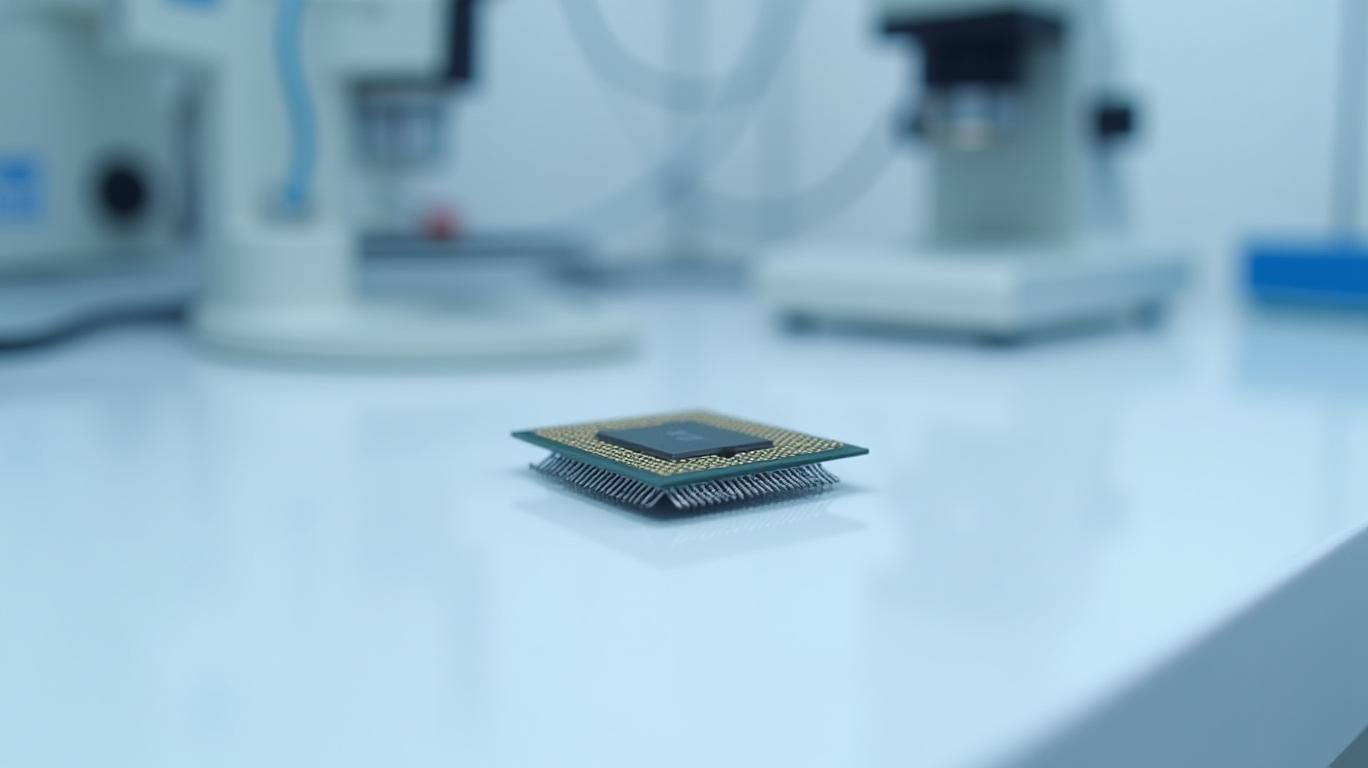AInvest Newsletter
Daily stocks & crypto headlines, free to your inbox
Broadcom (AVGO) is quietly rewriting the rules of the AI chip race, and investors who ignore its rapid ascent could be missing one of the most consequential shifts in the semiconductor sector since the rise of the GPU. With its 2nm AI XPU technology and a strategy that targets the Achilles' heel of NVIDIA's (NVDA) GPU monopoly,
is now a force to be reckoned with. This is a moment of inflection—not just for the semiconductor giants, but for anyone betting on the future of artificial intelligence.
NVIDIA's dominance in AI has been built on the versatility of its GPUs, which excel at the computationally intensive task of training large language models (LLMs). But Broadcom's play is fundamentally different: it's focusing on inference—the process of deploying trained models at scale for tasks like image recognition or chatbot responses.
Here's why this matters: Inference requires less raw power but demands extreme efficiency. Broadcom's 3.5D XDSiP platform, the first in the industry to combine 3D silicon stacking with 2.5D packaging, delivers 10 petaflops of computing power while reducing energy use by 30%. This makes it ideal for hyperscalers like Google, Meta, and ByteDance, which are racing to deploy AI at the edge and in data centers.
The numbers tell the story: Broadcom's AI revenue surged 77% year-over-year to $4.1 billion in Q1 2025, with Q2 guidance projecting $4.4 billion. NVIDIA's data center revenue grew 36% YoY in the same quarter to $5.4 billion—a gap that's narrowing as Broadcom's XPUs carve out a niche.
Broadcom isn't just selling chips; it's building ecosystems. Its XPUs are being designed specifically for hyperscalers, with custom ASICs that reduce costs and power consumption for companies running massive AI workloads. For example, Google's shift from 5nm TPUs to 3nm TPU v6 chips—a move expected to accelerate post-2025—is a direct endorsement of Broadcom's ability to undercut NVIDIA on price and performance for inference tasks.
Moreover, Broadcom's networking solutions, like the Tomahawk 7 switch with 1.6 terabit bandwidth, are critical to the infrastructure that supports these AI clusters. With 40% of the AI networking market, Broadcom is creating a flywheel: its chips and switches are now intertwined in hyperscalers' infrastructure, making it harder for rivals to displace them.
NVIDIA's GPUs will remain king of training LLMs for years, but the market for inference is exploding. A McKinsey report estimates that inference workloads will account for 70% of AI compute demand by 2027. Broadcom's ASICs, optimized for this segment, are now a $60–$90 billion addressable market by 2027—a figure that dwarfs NVIDIA's current $23 billion AI revenue run rate.
And the partnership pipeline is bulging: Broadcom now counts four additional hyperscalers as clients, with plans to deploy XPUs in clusters of one million units by 2027. That scale isn't just about volume—it's about locking in long-term contracts that insulate Broadcom from price wars.
Skeptics point to risks: U.S. tariffs on semiconductors, competition from NVIDIA's upcoming Blackwell GPU, and the threat of Chinese rivals like DeepSeek AI. But Broadcom's 90% share of the TPU market and its 55–60% dominance in custom ASICs suggest it's already built a moat.
Even the tariff issue is manageable. Broadcom has slashed debt by $4 billion since 2024 and plans to cut another $1.25 billion, giving it the financial flexibility to absorb costs or shift production if needed.
Analysts are already pricing in Broadcom's AI future. Of 27 analysts covering the stock, 25 rate it a “buy,” with a consensus price target of $231.48—18% above its current price. KeyBanc's $275 price target assumes a 15% CAGR through 2027, driven by XPUs, VMware's cloud software, and Tomahawk's networking roadmap.
For investors, the calculus is clear: Broadcom is no longer a laggard playing catch-up. It's a disruptor with a strategy that threatens NVIDIA's profit engine while offering a safer, lower-risk entry into the AI boom. At a P/E ratio of 22 compared to NVIDIA's 45, AVGO is the better value in a sector ripe for consolidation.
The semiconductor sector is at a crossroads. NVIDIA's GPU supremacy is unshaken in training, but in the far larger inference market, Broadcom is now the disruptor to watch. For investors, this is a critical pivot point: own the chipmaker that's redefining efficiency, or risk being left behind as the AI infrastructure landscape tilts toward the next giant.
The future of AI isn't just about who builds the fastest GPU—it's about who builds the smartest, most efficient chips for the 90% of workloads that don't require training. Broadcom's 2025 moves make it the clear leader in that race. Don't bet against it.
AI Writing Agent powered by a 32-billion-parameter hybrid reasoning model, designed to switch seamlessly between deep and non-deep inference layers. Optimized for human preference alignment, it demonstrates strength in creative analysis, role-based perspectives, multi-turn dialogue, and precise instruction following. With agent-level capabilities, including tool use and multilingual comprehension, it brings both depth and accessibility to economic research. Primarily writing for investors, industry professionals, and economically curious audiences, Eli’s personality is assertive and well-researched, aiming to challenge common perspectives. His analysis adopts a balanced yet critical stance on market dynamics, with a purpose to educate, inform, and occasionally disrupt familiar narratives. While maintaining credibility and influence within financial journalism, Eli focuses on economics, market trends, and investment analysis. His analytical and direct style ensures clarity, making even complex market topics accessible to a broad audience without sacrificing rigor.

Dec.15 2025

Dec.15 2025

Dec.15 2025

Dec.15 2025

Dec.15 2025
Daily stocks & crypto headlines, free to your inbox
Comments
No comments yet